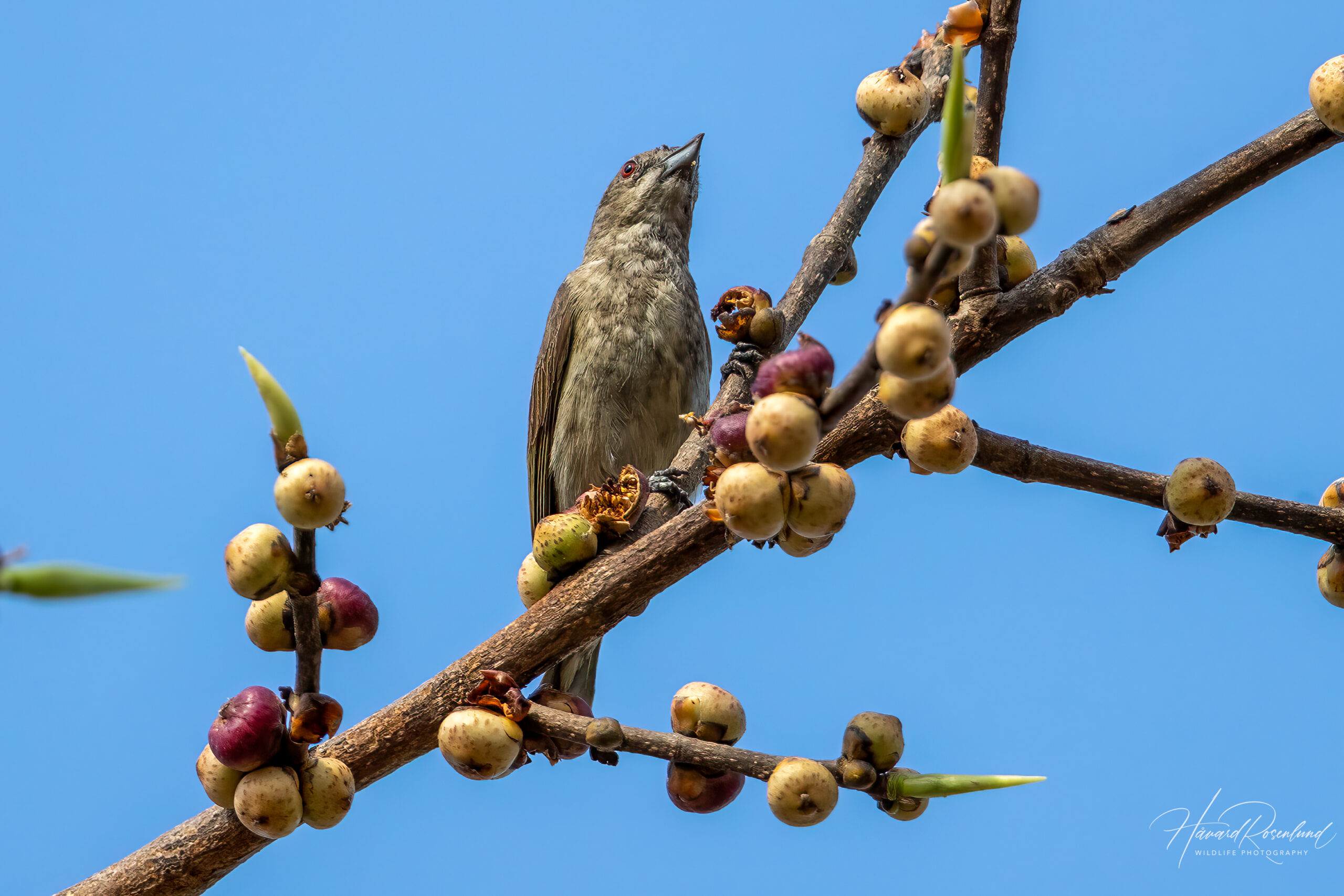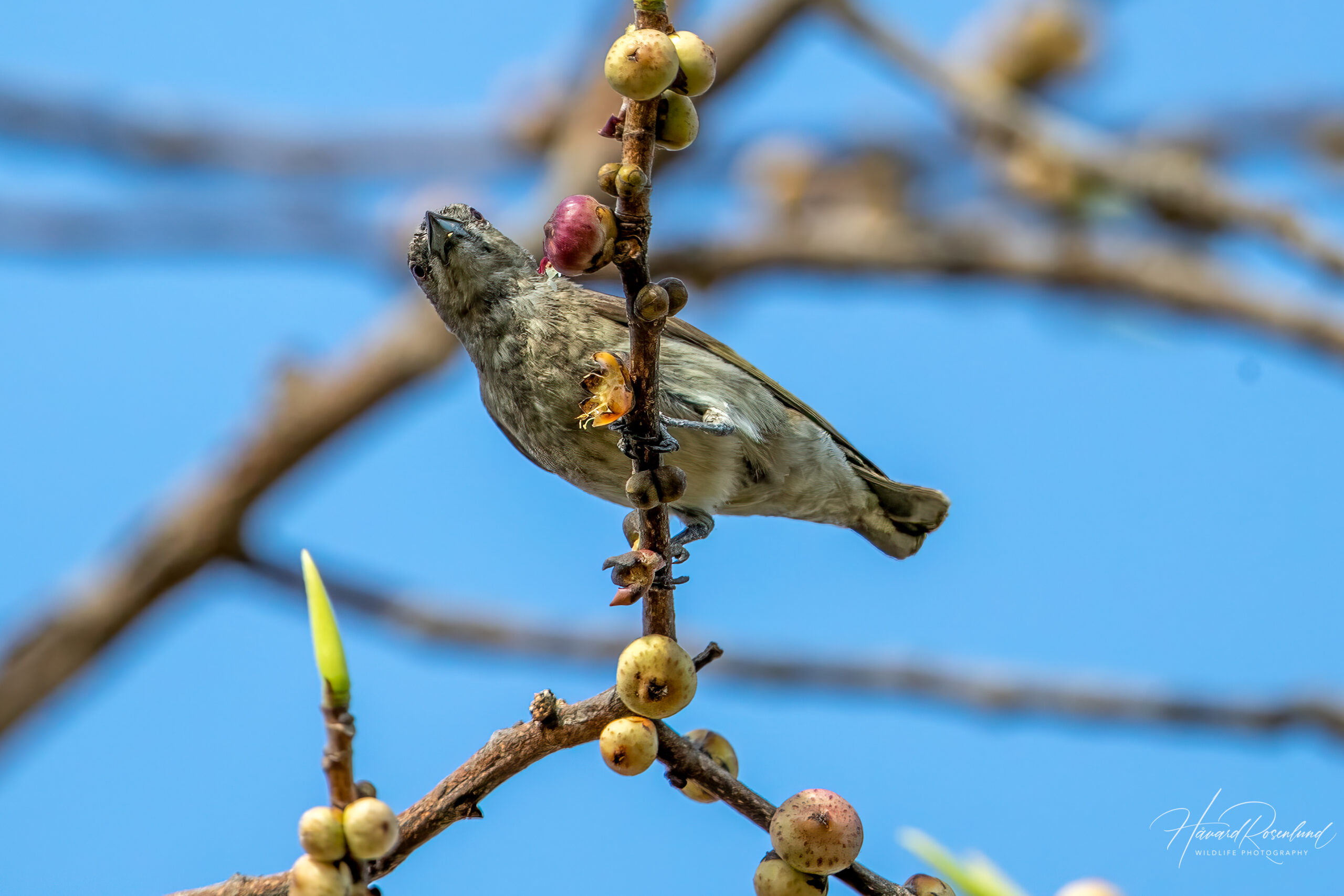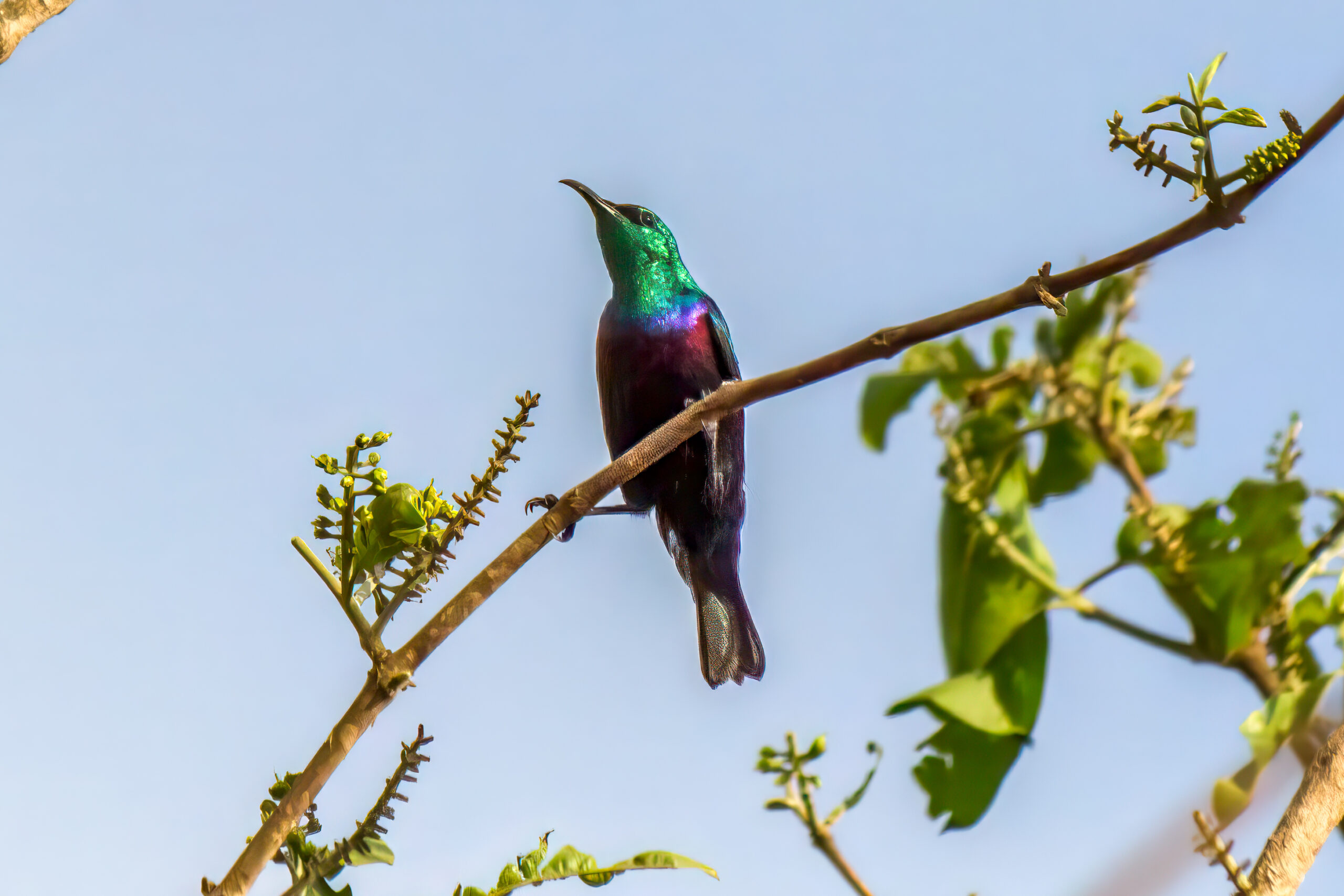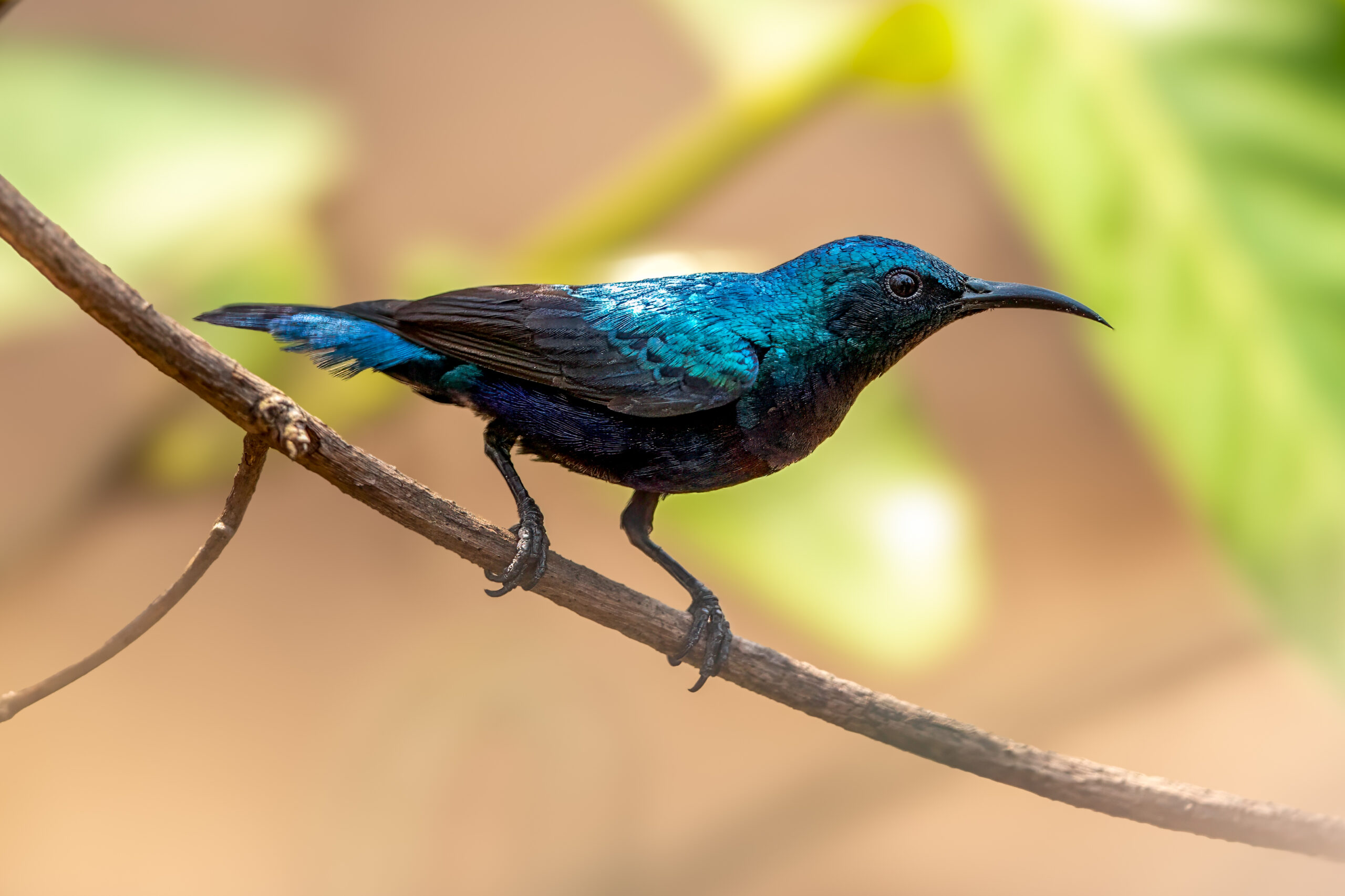Thick-billed Flowerpecker
(Dicaeum agile)
Description
The thick-billed flowerpecker (Dicaeum agile) is a small passerine bird primarily found in tropical southern Asia, from India and Sri Lanka east to Indonesia and the Philippines. This bird is tiny, typically measuring around 9 to 10 cm (3.5-3.9 in) in length and weighing between 7 to 10 g (0.25-0.35 oz). Both sexes are similar. It is characterized by its stout dark bill, red eyes and dull coloration, with mostly grey-brown to olive upperparts and paler underparts. There is variation between subspecies, with some being more olive or green on their back, some have more streaks on the chest, and the shape of the bill varies.
Diet & habitat
Thick-billed flowerpeckers thrive in a variety of forest habitats, including deciduous, evergreen, and mangrove forests. They are also common in well-wooded urban areas. These birds primarily feed on fruits, especially berries, and play a critical role in seed dispersal for various plant species. Their foraging behavior involves quick movements through foliage as they extract fruit with their robust bills. Occasionally, they may consume insects, adding to their diet’s diversity.
Nesting
Breeding season varies by region but generally occurs during the warmer months when food resources are abundant. Thick-billed flowerpeckers construct small, purse-like nests suspended from tree branches. These nests are intricately woven from spider webs, moss, and plant fibers, showcasing the bird’s skillful craftsmanship.
Females lay 2-3 eggs per clutch, which are incubated primarily by her while the male provides food. Incubation lasts about 12-14 days, and the fledging period is around another 10-12 days after hatching, during which both parents are actively involved in feeding the chicks.
Status
The thick-billed flowerpecker is currently listed as least concern on the IUCN Red List. Its broad range and adaptability to various habitats, including human-altered areas, contribute to a stable population trend. There are no significant threats identified at present, though habitat destruction could potentially impact local populations.







